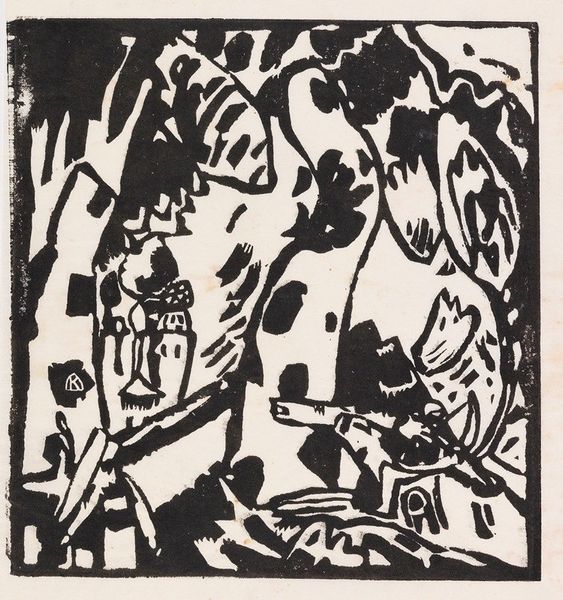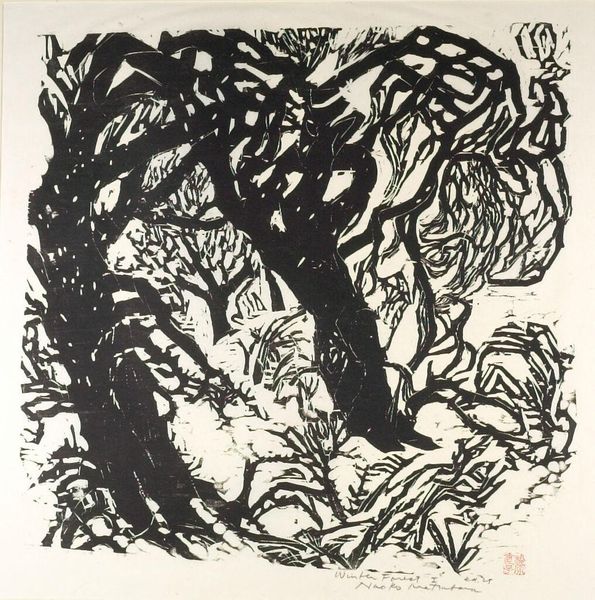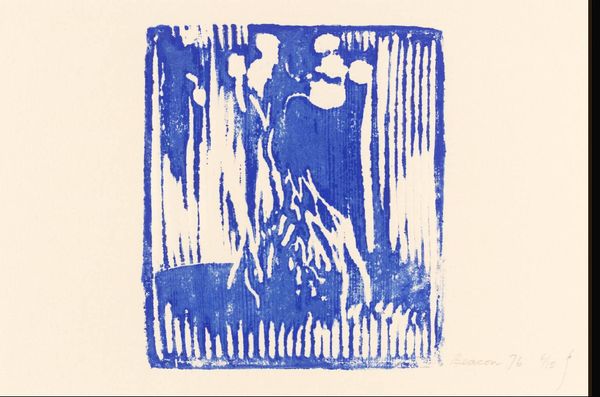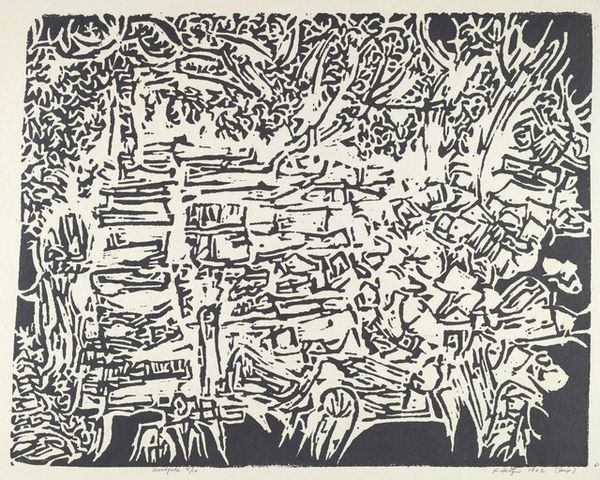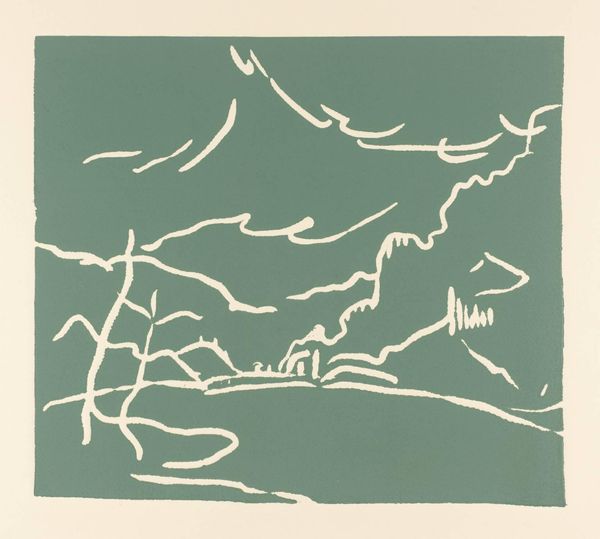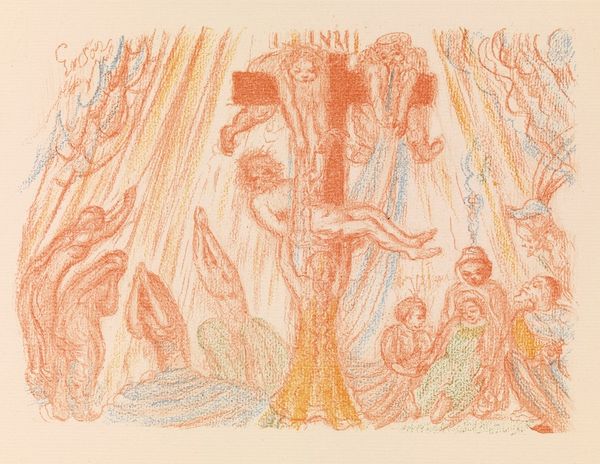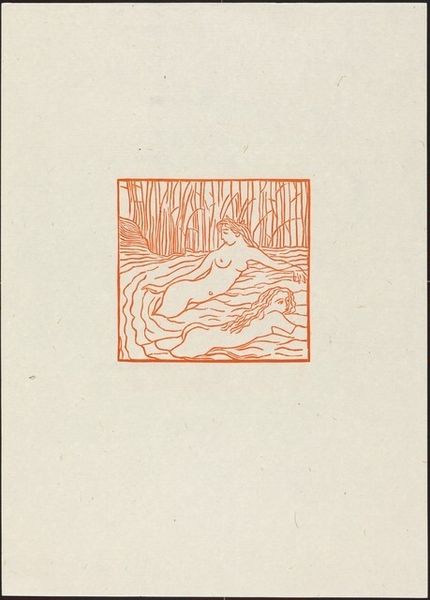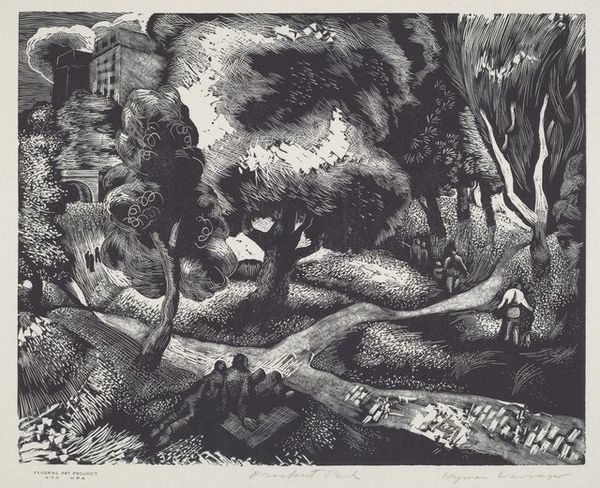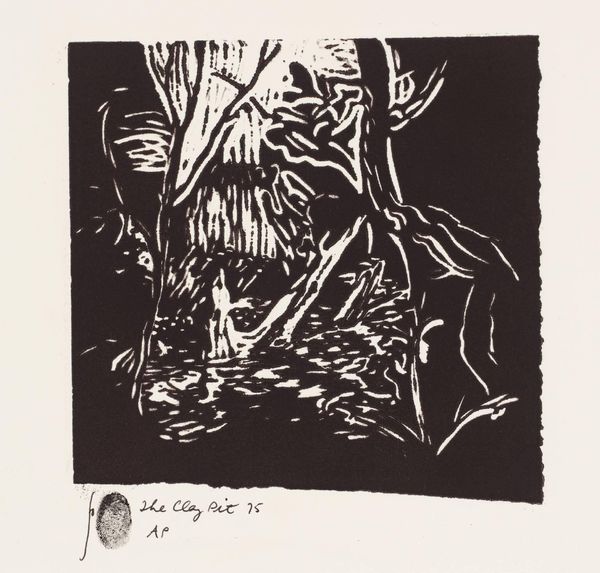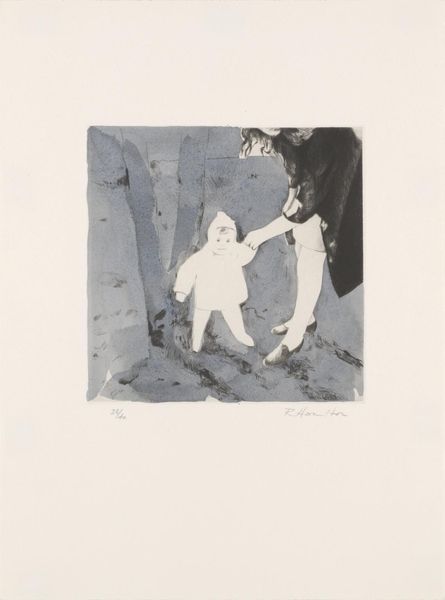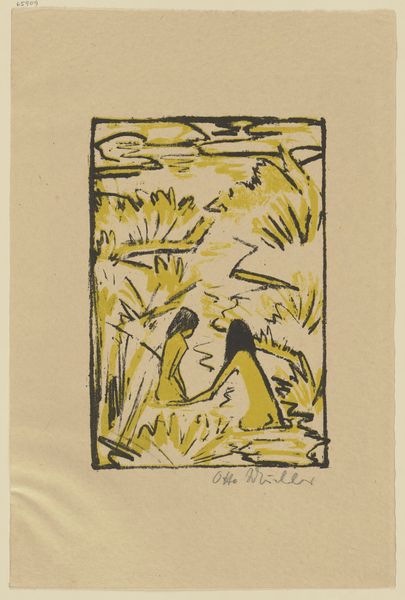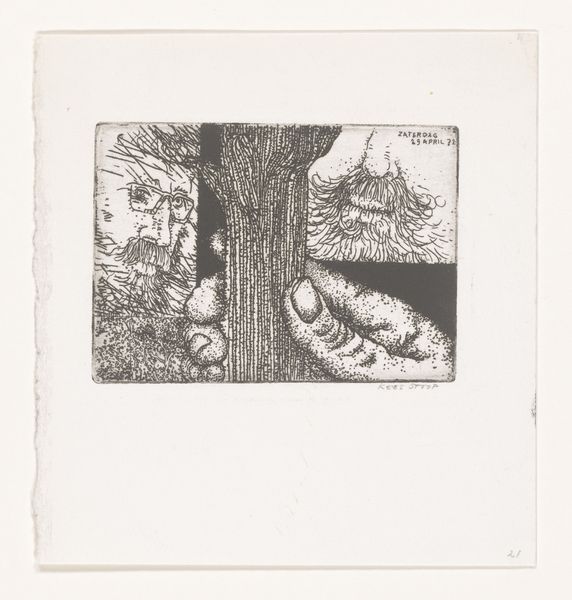
drawing, paper, ink
#
drawing
#
narrative-art
#
pen illustration
#
pen sketch
#
arts-&-crafts-movement
#
landscape
#
figuration
#
paper
#
ink line art
#
ink
#
symbolism
Copyright: Public Domain: Artvee
Curator: Here we have Walter Crane’s 1908 drawing, "The Trees and the Woodman," a work rendered in ink on paper. The illustrative style is quite characteristic of the Arts and Crafts movement. Editor: My initial thought is how striking the dynamism is. You've got the figure poised to strike, amidst the organic flow of the forest, it feels so charged with potential energy. I'm really drawn to the textural variations achieved with what appears to be just ink. Curator: It's intriguing how Crane uses a fable here to explore the intersection of human need and environmental exploitation. The trees’ request for only a small piece leading to complete destruction speaks volumes about unchecked power and the vulnerable’s trust being betrayed, especially resonant when considering labor disputes of the era. What commentary could Crane be making about human insatiability? Editor: Absolutely, it's a fable about resources, extraction, and unsustainable practice! It reminds me that paper, the very material the drawing is rendered on, comes at an ecological cost, especially with the expansion of printed materials. And let’s look closer at the composition. The central figure dominating the composition… it seems almost as if his physical strength is directly linked to his means for extraction and destruction. It becomes a closed feedback loop where both grow proportionally. Curator: Indeed, the figure, centrally located and powerfully drawn, is a stark representation of anthropocentric dominance. Crane, within his larger oeuvre, was keen on challenging established hierarchies and championing egalitarian ideals; this artwork feels like a darker reflection on power imbalances in society. Do you think his background in design and illustration adds to how he conceptualizes societal critiques? Editor: No doubt, his experience in mass production informs his understanding. It is not necessarily critical of capitalism directly. He emphasizes the raw transformation of resources, the human effort to extract them. By spotlighting labor through raw material transformation, Crane exposes the tension that runs deep through society. Curator: That is fascinating! Walter Crane was obviously aware of not just the fable that he retold in the drawing but also of the broader implications that the exploitation of natural resources would have for later generations. Editor: Right. Thinking about it that way allows for another viewing into the cost of progress and what ends up getting lost in the pursuit of economic gains.
Comments
No comments
Be the first to comment and join the conversation on the ultimate creative platform.
